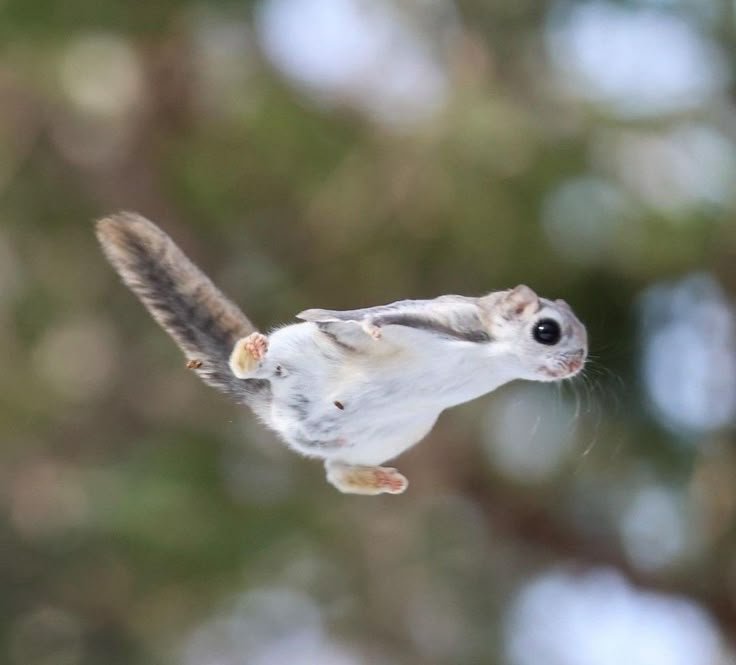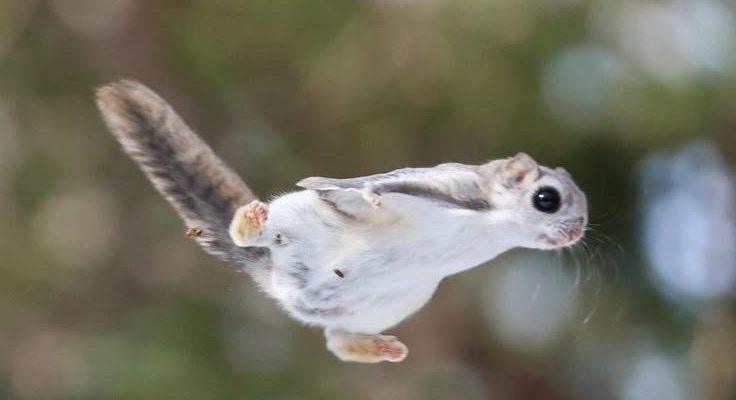
Here’s the thing: while they might look similar to regular squirrels, flying squirrels have unique traits that set them apart. They don’t actually *fly*. Instead, they glide gracefully from tree to tree, thanks to a special membrane that stretches from their wrists to their ankles. If you’ve ever seen a flying squirrel in action, it’s a sight to behold. They can glide up to 150 feet, almost like they’re using nature’s own zip line! But this also leads to a few misunderstandings—let’s unpack them together.
Myth 1: Flying Squirrels Are Just Regular Squirrels with Wings
You might be surprised to learn that flying squirrels aren’t just squirrels with a little added “wing” magic. They belong to the family Sciuridae, just like typical squirrels, but they are their own unique species. They have specialized adaptations that help them thrive in their arboreal (tree-dwelling) habitats.
Flying squirrels have a patagium, which is that stretchy membrane I mentioned earlier. This allows them to glide through the air rather than fly. To put it another way, imagine how a kite soars through the sky with the wind—flying squirrels use their patagium to catch air currents. They also have large, sensitive eyes for seeing in low-light conditions, making them perfectly adapted for nighttime adventures.
The myth that flying squirrels have wings does a disservice to how incredible these creatures truly are. It’s not about wings; it’s about their unique biology and their ability to navigate the treetops with remarkable skill.
Myth 2: Flying Squirrels Are Dangerous to Humans
Another common misconception is that flying squirrels pose a danger to humans. In reality, flying squirrels are generally quite shy and prefer to avoid contact with people. They’re not aggressive, and they’re not out to cause trouble. If you happen to spot one, it’s likely that it will quickly scurry away to safety.
Honestly, unless provoked, they’re more likely to be curious about you than anything. They have tiny teeth and may nibble on things they find, like furniture or electrical wires, but they aren’t out to bite humans. Most encounters between flying squirrels and people are harmless. If you leave them be, they’ll do the same for you.
In areas where flying squirrels coexist with humans, like backyards or parks, they can be quite entertaining to watch. Just sit quietly, and you might see them gliding from branch to branch, showcasing their incredible agility.
Myth 3: Flying Squirrels Can Fly Long Distances
You might be wondering how far flying squirrels can actually glide. While they can soar impressively, they’re not gliding superheroes. The record for gliding distance is around 150 feet—but that’s under ideal conditions. Factors like wind speed, tree height, and health all play a role in how far they can glide.
Think of it like a well-aimed Frisbee. In the right conditions, it sails smoothly through the air, but throw it wrong, and it flops. Similarly, flying squirrels use their specialized tails to steer mid-glide, adjusting their direction and landing spots as needed. They might not fly long distances in the traditional sense, but they’ve mastered the art of gliding with style!
In the wild, these gliding abilities help them travel between trees for food, escape from predators, and find mates. So while they’re not packing a suitcase for a long journey, they’re pros at getting around in their treetop world.
Myth 4: All Flying Squirrels Are the Same
When you think of flying squirrels, you may envision just one type. However, there are several species of flying squirrels, primarily divided into the Northern and Southern varieties. The Northern Flying Squirrel is typically found in Canada and the northern United States, while the Southern Flying Squirrel is more common in the southern parts of the U.S.
Each species has unique traits and adaptations. For instance, the Southern Flying Squirrel is generally smaller and has softer fur compared to its Northern counterpart. Additionally, their habitats, dietary preferences, and social structures can vary. So, if you’re out in the woods and see a flying squirrel, it could very well belong to one of these distinct species.
Understanding these differences gives us a richer appreciation for these creatures and helps dispel the myth that all flying squirrels are identical.
Myth 5: Flying Squirrels Are a Sign of Bad Luck
Another common myth is that seeing a flying squirrel is a bad omen. This idea might stem from old folklore or superstitions. In truth, flying squirrels are harmless and contribute positively to their ecosystems by helping disperse seeds and pollinating plants.
If you spot one, think of it as a little blessing rather than bad luck! In many cultures, animals symbolize different traits, and flying squirrels can represent adaptability, exploration, and curiosity.
Rather than viewing them with suspicion, it’s better to appreciate their role in nature. They play a vital part in forest ecosystems, aiding in the growth of trees and plants. So next time you see one gliding gracefully through the air, remember that it’s a little ambassador of nature doing its part.
Myth 6: Flying Squirrels Are Nocturnal Pests
Many folks believe that flying squirrels are just pests that come out at night to wreak havoc. While it’s true that they are nocturnal, they prefer to stay out of sight, foraging for food in the quiet of the night. They primarily eat fruits, nuts, seeds, and even fungi, which means they actually help maintain the health of their environment.
Let me explain this further: Because they spend most of their lives high in the trees, they rarely come into contact with humans, unless they’re in search of food. If they do venture near houses, it’s often to raid bird feeders or examine gardens, not to cause trouble.
If flying squirrels do become a nuisance, it’s usually because they’re seeking food in urban areas. You can easily discourage them by securing trash, removing bird feeders at night, and sealing up entry points into your home.
Myth 7: Flying Squirrels Are Rare and Endangered
There’s a widespread belief that flying squirrels are endangered animals, but this isn’t entirely accurate. While some specific species may be threatened due to habitat loss and other factors, many populations remain stable. The most common, the Southern Flying Squirrel, is quite abundant in the wild.
You might be surprised to find out that some flying squirrel species actually flourish in urban areas! They adapt well to parks and gardens, which sometimes offer an array of food options. Conservation efforts continue to monitor their populations, ensuring they thrive in both rural and urban settings.
Understanding the status of flying squirrels helps us appreciate their resilience and adaptability. Rather than viewing them as endangered, we should focus on preserving their habitats and ensuring they can thrive for generations to come.
In conclusion, flying squirrels are fascinating animals surrounded by myths and misconceptions. They’re not just cute little critters gliding through the trees; they have complex behaviors, diverse species, and important roles in their ecosystems. If we take the time to understand these creatures, we can coexist peacefully with them in our backyards and parks, appreciating their unique place in nature. So next time someone mentions flying squirrels, you’ll be armed with knowledge—and maybe even ready to share a few fun facts over coffee!

